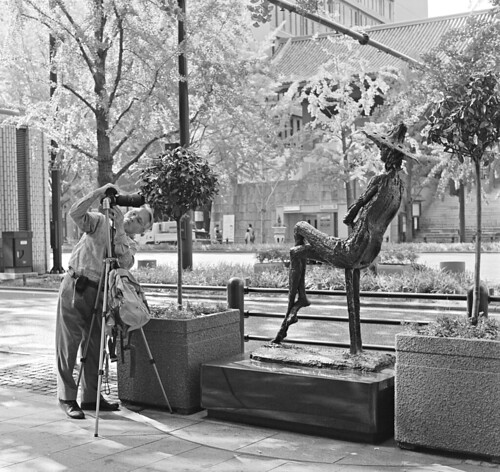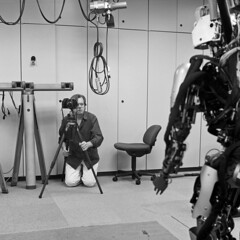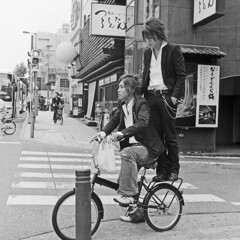Black and white film development turns out to be easy. It is cheaper than having a store do it (half price or much less, depending), and for medium-format it's much faster: the store takes three or four days, while doing it at home takes an hour or so. It gives you more control over the result - and more ways to screw up too, of course. You don't need a blacked-out room or anything, and all equipment, chemicals and stuff fits on one shelf in my study. The one single thing that takes a bit of practice is the first step of rolling up the film onto a spool for development, and doing it without seeing what you do. I had to practice doing it half a dozen times with an expired roll of film until it "clicked" and I got the knack of how to do it easily.
Some more examples below; please click through as the images are better viewed large.
Yves Gellie is a french photographer that can take better pictures using a pointed stick than I cold ever do with a camera. He visited the lab to take a picture for a project of his. Of course I had to take a shot of him working. That's a Mamiya 7 he's using in that picture, by the way, and no, I would not mind having one.
I realized I hadn't taken a robot picture in black and white so I set up a simple cross lighting setup and the Yashica on a tripod. One of the great things about black and white, by the way, is that you don't have to care about the color of your lights. The lighting are two dirt-cheap construction site lights and nothing else. Had I taken it in color it'd be a confused riot of red and orange from the construction lights, green from the ambient overhead flourescents and a bit of bluish daylight from out on the left. In black and white it's all smooth, pleasant tones of gray.






Herr Morén:
ReplyDeleteThese are really gorgeous. Who would have thought that one could associate "lush" and "expressive" with "gray."
And I thank you very much for the kind words. I just wish my pictures lived up to them.
ReplyDelete